PCIe SSD Faceoff: Samsung XP941 (128GB & 256GB) and OCZ RevoDrive 350 (480GB) Tested
by Kristian Vättö on September 5, 2014 3:00 PM ESTRandom Read/Write Speed
The four corners of SSD performance are as follows: random read, random write, sequential read and sequential write speed. Random accesses are generally small in size, while sequential accesses tend to be larger and thus we have the four Iometer tests we use in all of our reviews.
Our first test writes 4KB in a completely random pattern over an 8GB space of the drive to simulate the sort of random access that you'd see on an OS drive (even this is more stressful than a normal desktop user would see). We perform three concurrent IOs and run the test for 3 minutes. The results reported are in average MB/s over the entire time.

Random read performance remains unchanged for the XP941 despite the lower capacity, while the RevoDrive does not really enjoy any performance increase over other SandForce based SSDs.
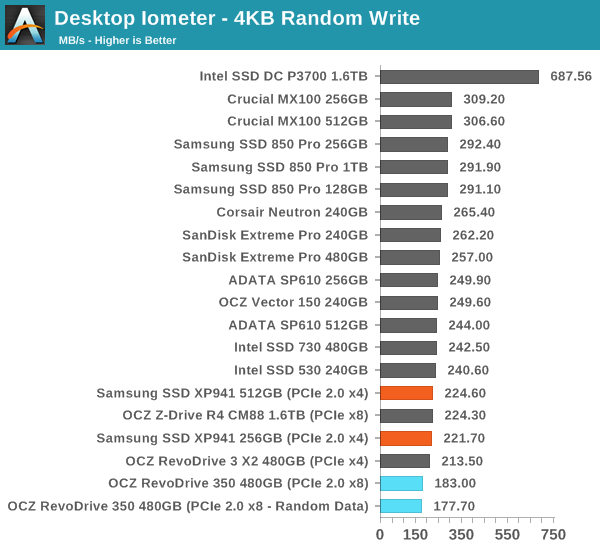
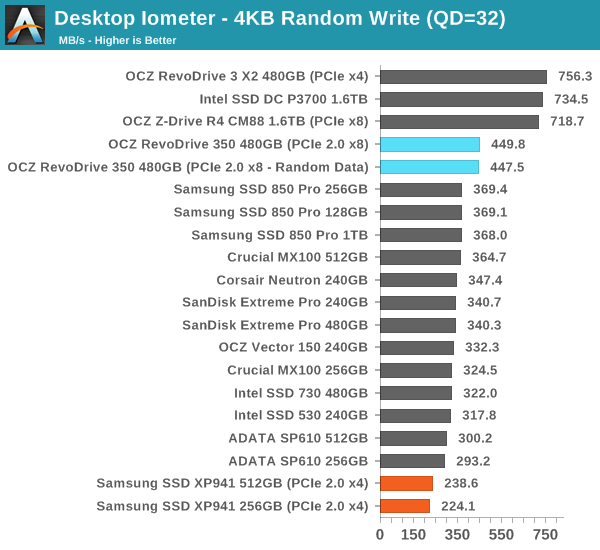
As for random write, the 256GB XP941 appears to be almost a match for the 512GB. The RevoDrive is a fairly interesting case because at low queue depths its performance is pretty bad, but the performance scales with the queue depth. Again, RAID only helps when there are multiple IOs in parallel, which only happens at high queue depths. At low queue depths RAID only seems to cause overhead, which would explain the low performance.
Sequential Read/Write Speed
To measure sequential performance we run a 1 minute long 128KB sequential test over the entire span of the drive at a queue depth of 1. The results reported are in average MB/s over the entire test length.
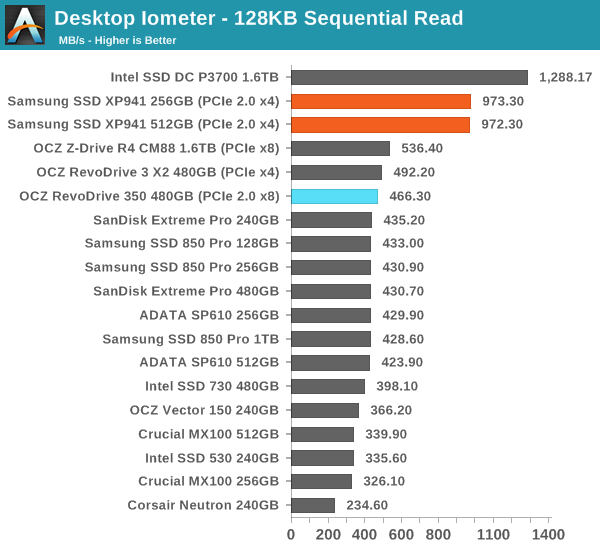
The XP941 continues to be strong, but the RevoDrive still does not offer much benefit over a SATA drive. We are dealing with a QD1 situation here so the RevoDrive cannot really take advantage of its internal parallelism.
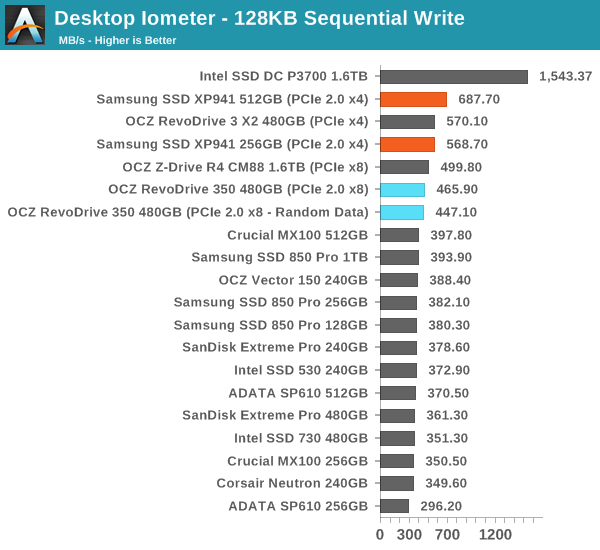
AS-SSD Incompressible Sequential Read/Write Performance
The AS-SSD sequential benchmark uses incompressible data for all of its transfers. The result is a pretty big reduction in sequential write speed on SandForce based controllers, but most other controllers are unaffected.

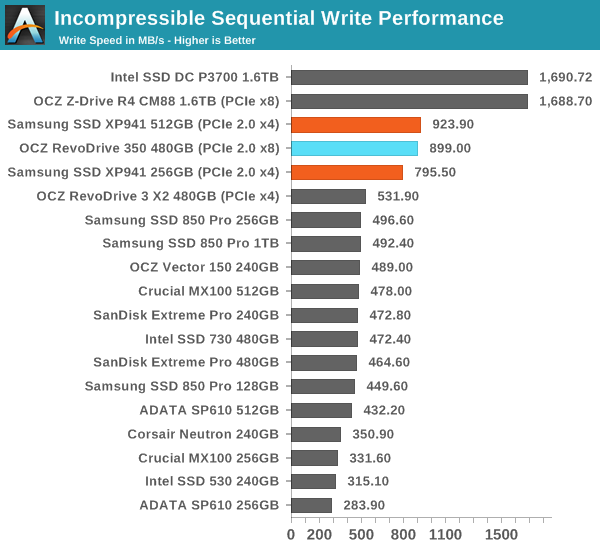










47 Comments
View All Comments
thel33ter - Friday, September 5, 2014 - link
Excellent review as always.Personally I see the performance as being slightly disappointing, but it's just a matter of time till performance akin to the Intel P3700 is going to be within reach of the average consumer.
Probably a silly question, but would it be possible to RAID two PCIe drives?
vLsL2VnDmWjoTByaVLxb - Friday, September 5, 2014 - link
It is odd that Intel RST is kept from years ago when there are scores and scores of fixes to the drivers since the release you are using. This may dramatically impact test results.I get the desire for bench and legacy scoring, but at a certain point you have to let go of legacy when serious improvements have been made to reliability, errata, bugs, etc, from previous drivers. Not to mention nobody should be using the drivers from this review.
Kristian Vättö - Friday, September 5, 2014 - link
We are in the process of upgrading to a new testbed with the latest drivers, but we stumbled into some incompatibilities that have delayed the transition.Remember that storage drivers are not as important as e.g. GPU drivers where one version can have dramatic improvements to one game. After all, the RST drivers are the same for all drives, so driver improvements should affect all drives pretty much equally.
joannecdinkins - Friday, September 5, 2014 - link
just as Larry answered I didnt even know that people able to get paid $6104 in a few weeks on the internet .go to this site>>>>> paygazette.ℭOM
coburn_c - Friday, September 5, 2014 - link
512GB occupying a desktop pcie slot is still criminal. Works well for mobile devices but we need to get these prices down and these capacities up in the desktop space.Kristian Vättö - Saturday, September 6, 2014 - link
Quite a few of the newer boards already come with M.2 slots, so if you are shopping for a new system you might as well choose a board that has a proper PCIe x4 M.2 slot.Galatian - Saturday, September 6, 2014 - link
But that limits your choice to essentially Intel Z97 or X99 chipset and from my research on Z97 this actually only leaves the ASRock Extreme6 and 9 as well as the mITX ASUS Maximus Impact VII.KarlKaiser - Friday, September 5, 2014 - link
Thanks for this article. It is obvious the storage industry is about to change but what I miss as an end-user is helpful comparisons from journalists like yourself that might help me to figure out what to buy now/soon. Keep it up!For example, for another $100 more than the 512GB Samsung XP941, soon we'll get the 400GB Intel DC P3500, which is on paper twice as fast at W/R 2500/1700 MB/s, if a somewhat smaller capacity.
Kristian Vättö - Saturday, September 6, 2014 - link
The P3500 is something I'll definitely be reviewing (for both, enterprise and client since there's been a ton of interest), but unfortunately we don't have any samples.DMCalloway - Saturday, September 6, 2014 - link
I agree. The Intel DC P series is the one to watch right now.